What is historical data? What is digital history?
Goals:
- What is historical data?
- What is “digital history”? What have most digital history projects looked like?
- How do historians turn digitized documents into historical data?
- What are the politics of archives, and how are these politics reproduced when archives go digital?
- How does historical data in online databases get generated?
Make sure to read (this is on the syllabus)
- CH 1 & 2, Meredith Broussard, Artificial Unintelligence: How Computers Misunderstand the World (Cambridge: MIT Press, 2018), UW Library ebook.
Then, after class, you will complete Workshop Parts 1 & 2, detailed on this page, and turn them in on Canvas. In a Word document or similar, answer the questions at the end of both parts.
Workshop Part 1: Understanding Historical Databases
Visit the online database, British Concentration Camps of the South African War, 1900-1902. This database was created by Dr. Elizabeth van Heyningen and her research assistants at the University of Cape Town, South Africa. It is supported by funding from the Wellcome Trust, an organization interested in the history of medicine in London, UK.
Start by hovering over the “Database” tab. Read both the pages listed under “Information” – they are “Sources of Information” and “Information Available.”
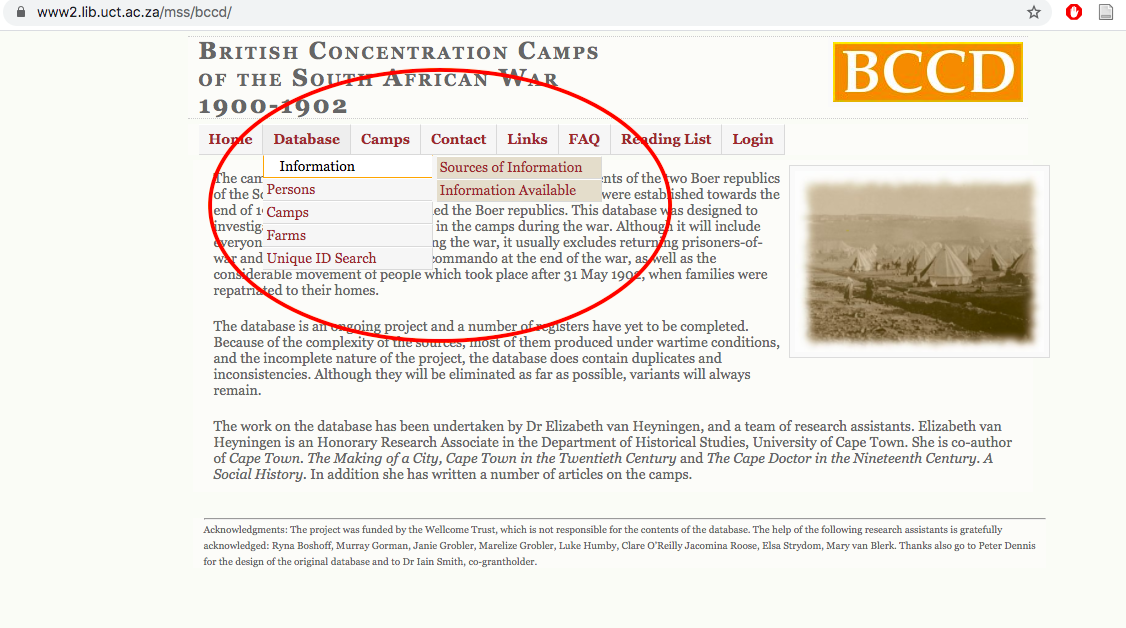
Next, hover over “Persons,” “Camps” and “Farms” to find the “Browse” options for all three of these categories. Click through to one of them. On each “Browse” page, note that you can search or click to “Next” to browse through more information.
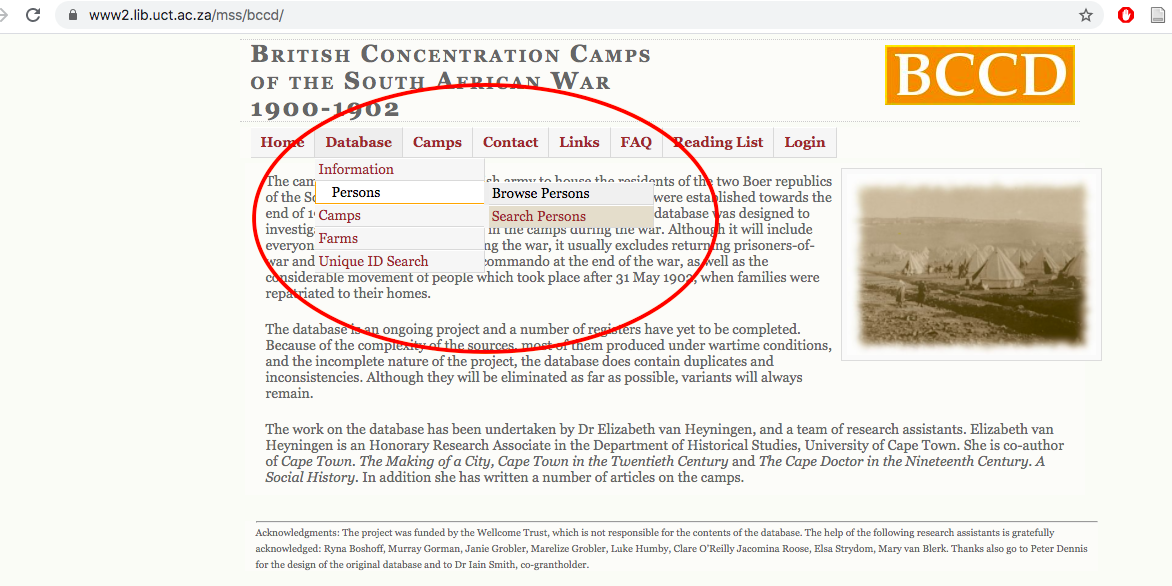
Spend 15-20 minutes browsing. What kinds of information can you find using this database? How does this database link people, camps, and farms together? Try and figure out these relationships. Now, head over to the “Camps” tab on the main menu bar at the top of the site.
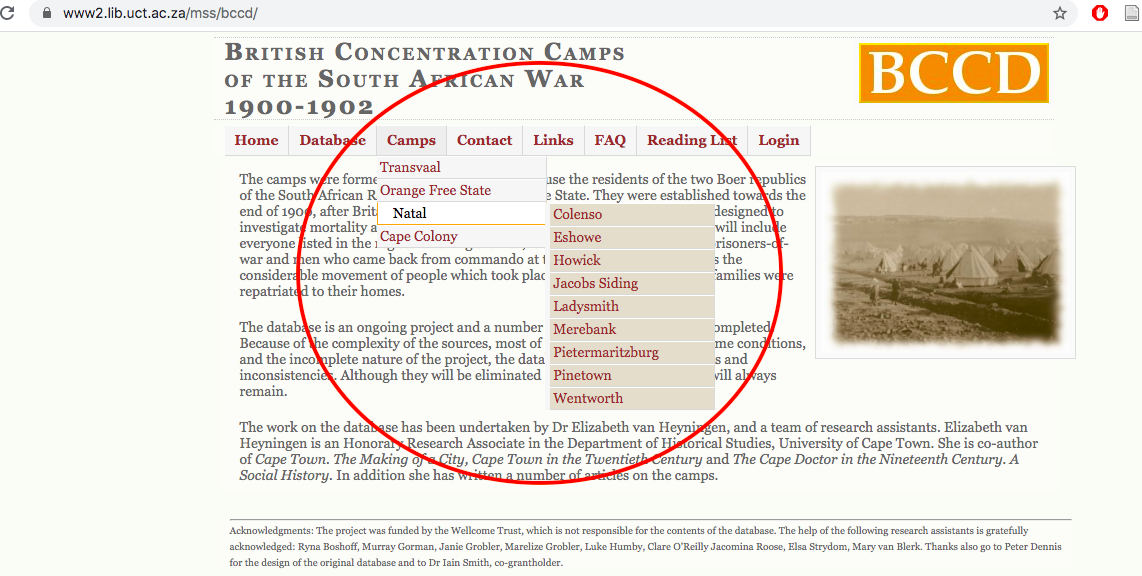
Take a look at the historical information provided about a few camps in at least two different regions. How does it help you to read some of this contextual information? Does it change how you think about anything you saw in the “Database”? [You don’t need to write answers to these questions, but keep them in mind as your answer the questions below]
As you browse, focus in on one person, and learn all you can about them by clicking through all of the different fields. Go over to the “Camps” tab and read about the camp they were held in.
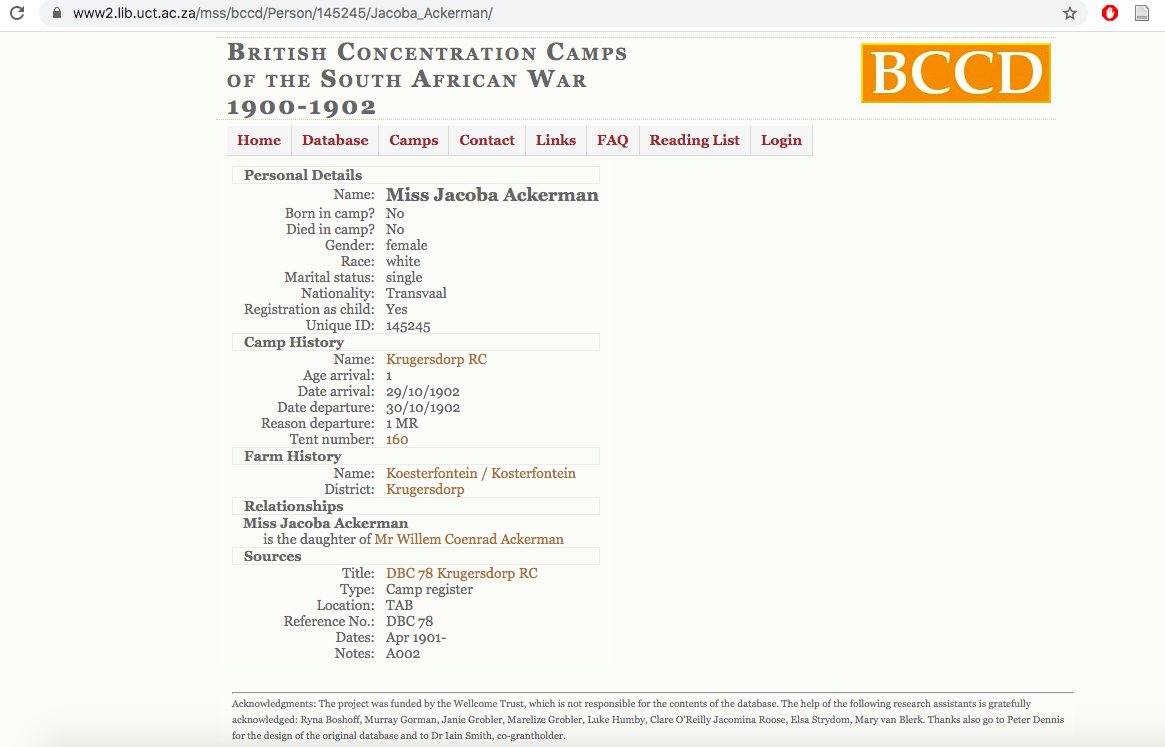
Answer the following questions in a Word doc or similar:
- Where does the information in this database come from? What are the sources it has digitized? What does it mean to the history of war and camps to have access to this material online? [Answer these questions in 2-4 sentences total]
- In 1-2 short paragraphs, write a mini-biography of this person’s experience in the South African War. Link to their “Persons” page at the end of your answer
- Finally, write 3-4 sentences reflecting on how useful this website is to you as a student of war in the 20th century. Is the data effectively organized and presented? Why or why not? What would make this database easier for you to use? What can you not learn from this database?
Workshop Part 2: Welcome to the Zooniverse
What kinds of data does a historian use? And, what are the challenges of making historical sources available digitally? How do historians manage tasks that computers can’t help them with, like the transcription of text that OCR (optical character recognition) programs can’t read? In many cases, historians spend hours and hours transcribing handwritten documents or documents that have a mixture of text types on a single page (like printed forms that have been filled out by hand or typewriter). Or, they upload their project to the Zooniverse.
Zooniverse is a US/UK partner-led project that was originally created to help astronomers classify different types of galaxies (and to train computers to do the same via machine learning). Now, other kinds of scholars use the Zooniverse to ask for citizens to help.
Your assignment is to participate in one of the two projects currently on the Zooniverse that relate to our class.
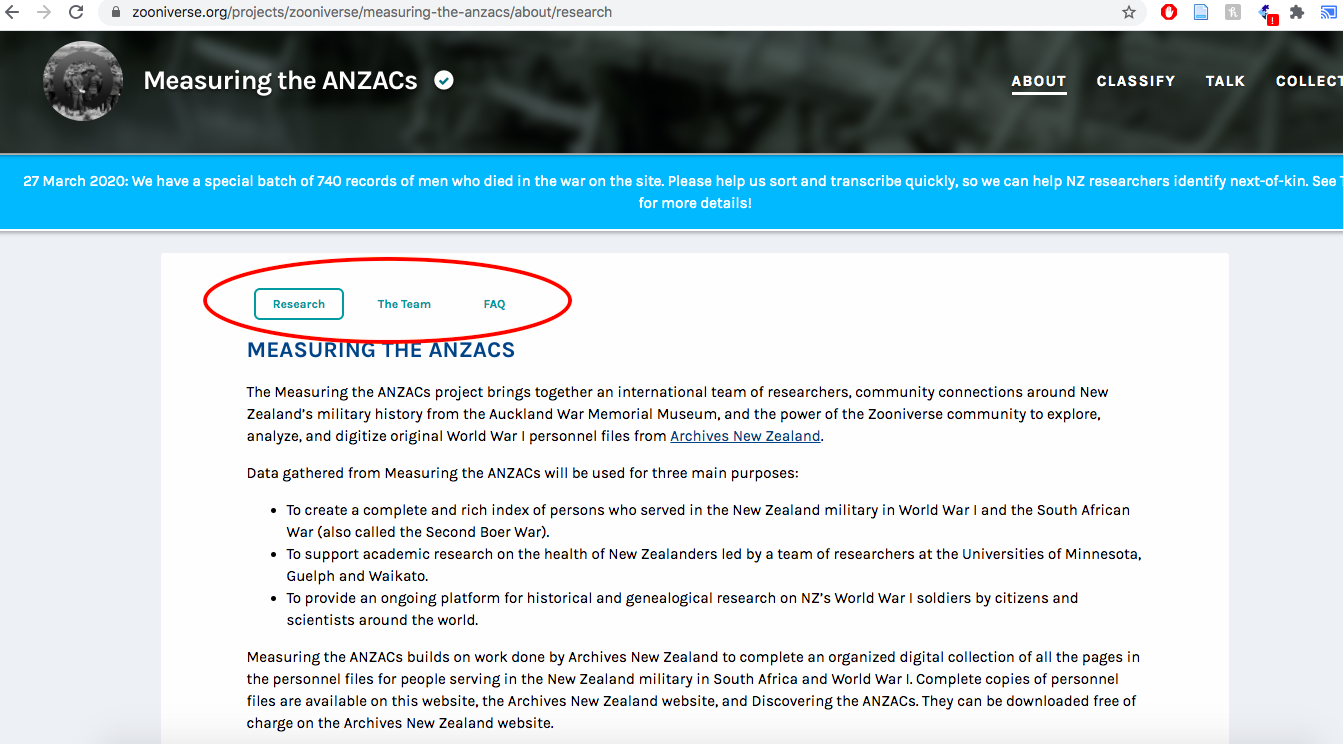
We encourage you to register for a Zooniverse account, although this is not required. If you do want to register, you will be able to see a history of your contributions to Zooniverse projects, gain access to discussion boards, and your contributions will be noted when the researchers whose projects you are contributing to eventually publish their work! If you don’t want to register for whatever reason, that’s fine too.
Once you read a little about these projects, choose one to contribute to. Do this by choosing a workflow on the home page of each project, under the main photo and the words “Get Started” at these links:
- Choose a Workflow here for hidden weather data collected by the US Navy in WWII.
- Choose a Workflow here for Measuring the Anzacs.
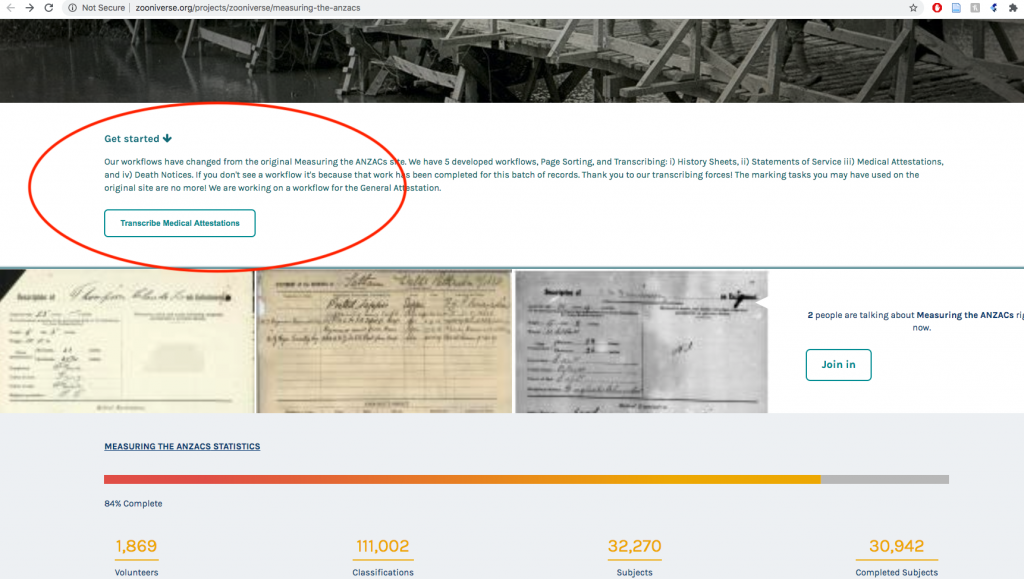
You can also click “Classify” in the upper right corner of both project pages:
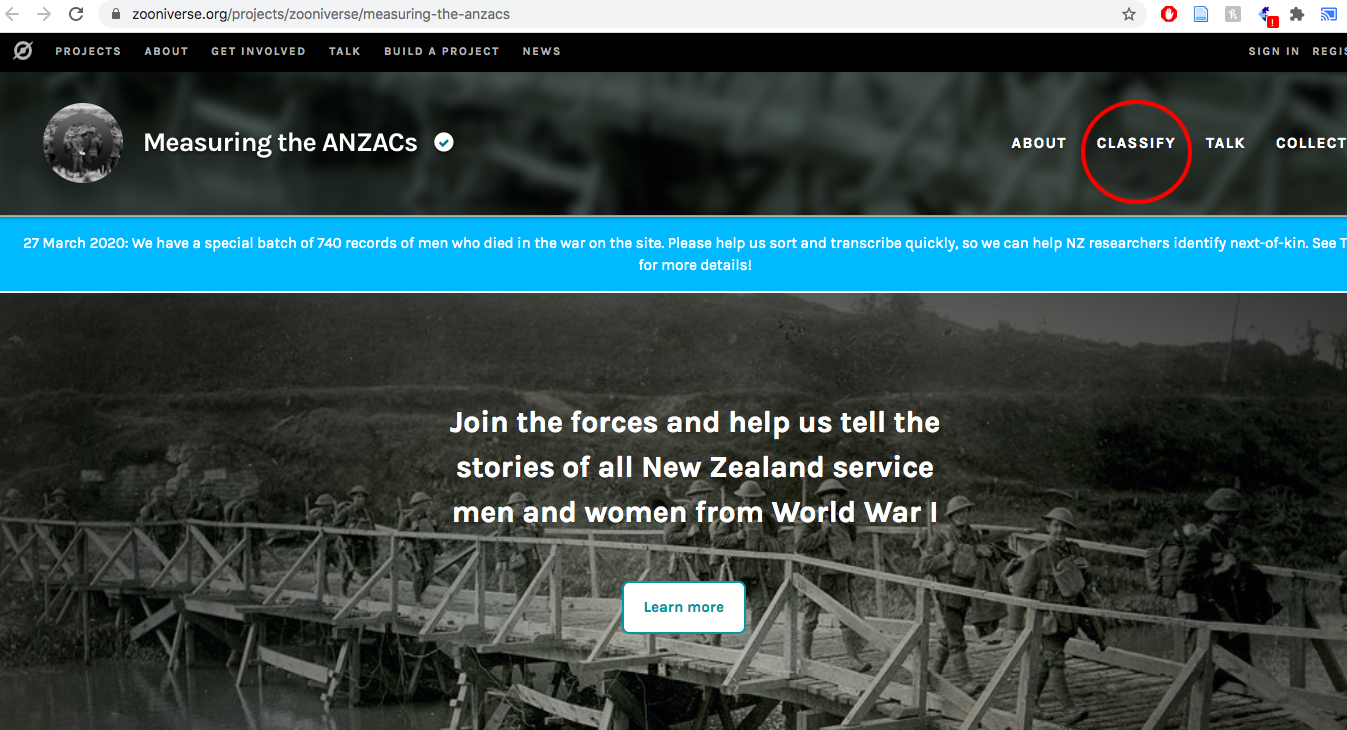
Go ahead! Follow along with the project tutorials and start classifying and transcribing! Please spend at least 25 mins classifying or transcribing the documents you have chosen to engage with.
In the same document that you wrote your answers in for Part 1, answer these questions based on your experience:
- Which project and which workflow did you decide to contribute to?
- In just 1 or 2 sentences: Who [scholars, institutions] is running this project? Where are the original records from? What is the goal of the project? Where is the information created on Zooniverse going?
- Without turning to Google, Wikipedia, or any other sources, what can you infer about American or Anzac soldiers/sailors in general or about specific soldiers or sailors based on what you saw in your workflow? What kinds of things are you interested in looking up based on the sources you classified or transcribed? What kinds of stories about American and Anzac sailors/soldiers could you tell using these sources? [4 sentences]
- Without turning to Google, Wikipedia, or any other sources, what can you infer about the governments who originally created these records? What purpose did they serve? Who do you think used them, saw them, or referred to them, and why? [ 4 sentences]
- What was the hardest part of participating in your project? Did anything surprise you about the process?
- Do you think this project can lead to new knowledge about history? Why or why not? What changes, if any, would you make to the process? [3 sentences]
- When you are done, upload your document (containing your answers for both parts of the workshop) to Canvas
